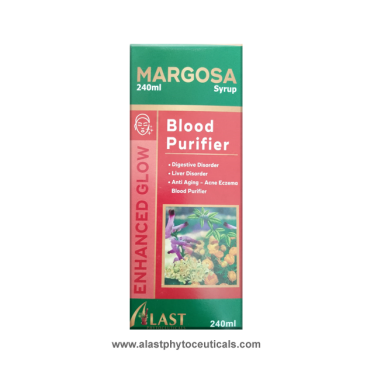- Your cart is empty
- Continue shopping
Margosa (Neem Tree) Overview
Botanical Name: Azadirachta indica
Indian Name: Neem
Origin and Distribution
Margosa, commonly known as the neem tree, is a large evergreen tree native to South Asia, particularly India. It typically grows to a height of 10 to 20 meters, with some specimens reaching up to 35 meters. The tree is characterised by its dense crown and pinnate leaves that consist of numerous leaflets.
Neem trees are cultivated extensively across India and are also found in regions such as Indonesia, Sri Lanka, Myanmar, Pakistan, Japan, and parts of tropical Australia and Africa.
Composition
The Neem tree is rich in various phytochemicals, including:
- Active constituents: Azadirachtin, nimbin, nimbidin, nimbolide, and quercetin.
- Essential Oils: Neem oil contains compounds like nimbosterol and fatty acids.
The seeds yield neem oil, known for its medicinal properties and use in agriculture as a natural pesticide.
Other parts of the tree, including bark and leaves, also contain beneficial compounds with various therapeutic properties.
Healing Power and Curative Properties
Neem has been utilised in traditional medicine for centuries, particularly in Ayurveda. Its healing properties encompass a wide range of ailments:
Malaria
Neem leaves have been traditionally used to treat malaria due to their liver-supporting properties. An infusion of fresh Neem leaves acts as a bitter tonic effective against chronic malarial fever.
Piles
Consuming 3 grams of inner pine bark with jaggery daily is recommended for managing piles. For bleeding piles, 3-4 neem fruits taken with water can be beneficial.
Leprosy
The sap of the neem tree is noted for its effectiveness in treating leprosy when taken in daily doses of 60 grams for 40 days. If sap is unavailable, a mixture of neem leaves and pepper can be used.
Skin Disorders
Neem leaves are effective against various skin conditions such as boils, ulcers, smallpox eruptions, and syphilitic sores. They can be used in poultices or as an ointment prepared by frying Neem leaves in ghee.
Hair Disorders
Washing hair with a decoction of neem leaves can prevent hair loss and promote growth. Neem oil is also effective against lice.
Eye Diseases
Applying neem leaf juice can treat conditions like night blindness and conjunctivitis. The juice should be applied carefully to avoid irritation.
Ear Ailments
Steam from boiled neem leaves can relieve earaches. Neem juice mixed with honey is also effective for ear boils.
Oral Disorders
Chewing neem twigs helps maintain oral hygiene by preventing gum diseases and bad breath.
Other Uses
Neem is beneficial during childbirth by promoting normal contractions and preventing infections. It also serves as a powerful insecticide and is used in organic farming to repel pests.

What is Margosa and their Benefits
Conclusion
The margosa tree (Azadirachta indica) stands out not only for its ecological benefits but also for its extensive medicinal applications. With a rich history rooted in traditional practices, neem continues to be a valuable resource in both the health and agricultural sectors. However, it is essential to use it judiciously due to potential side effects associated with excessive consumption or improper use. In summary, the diverse applications of the margosa tree make it an invaluable asset in traditional medicine and sustainable agricultural practices.
